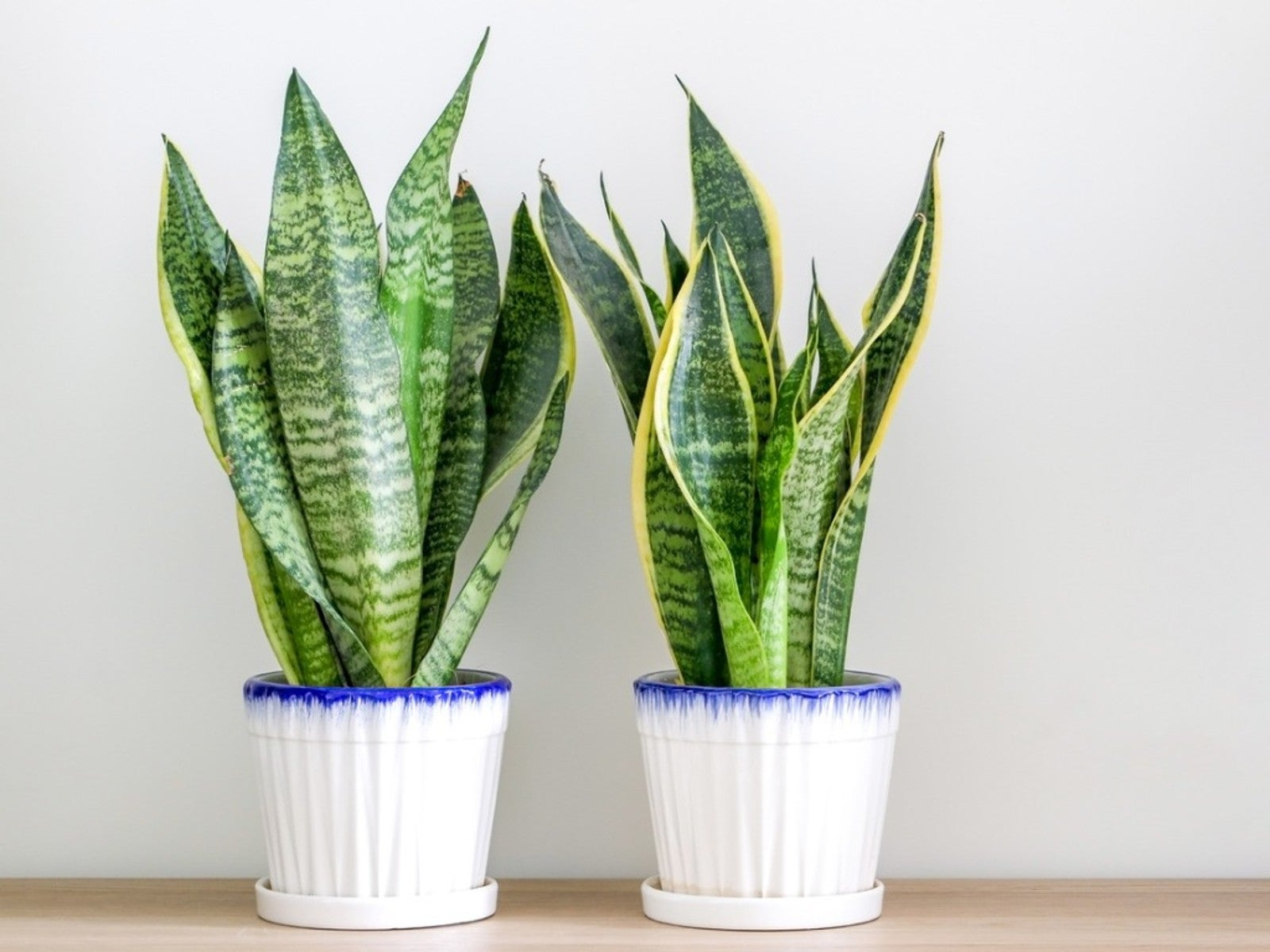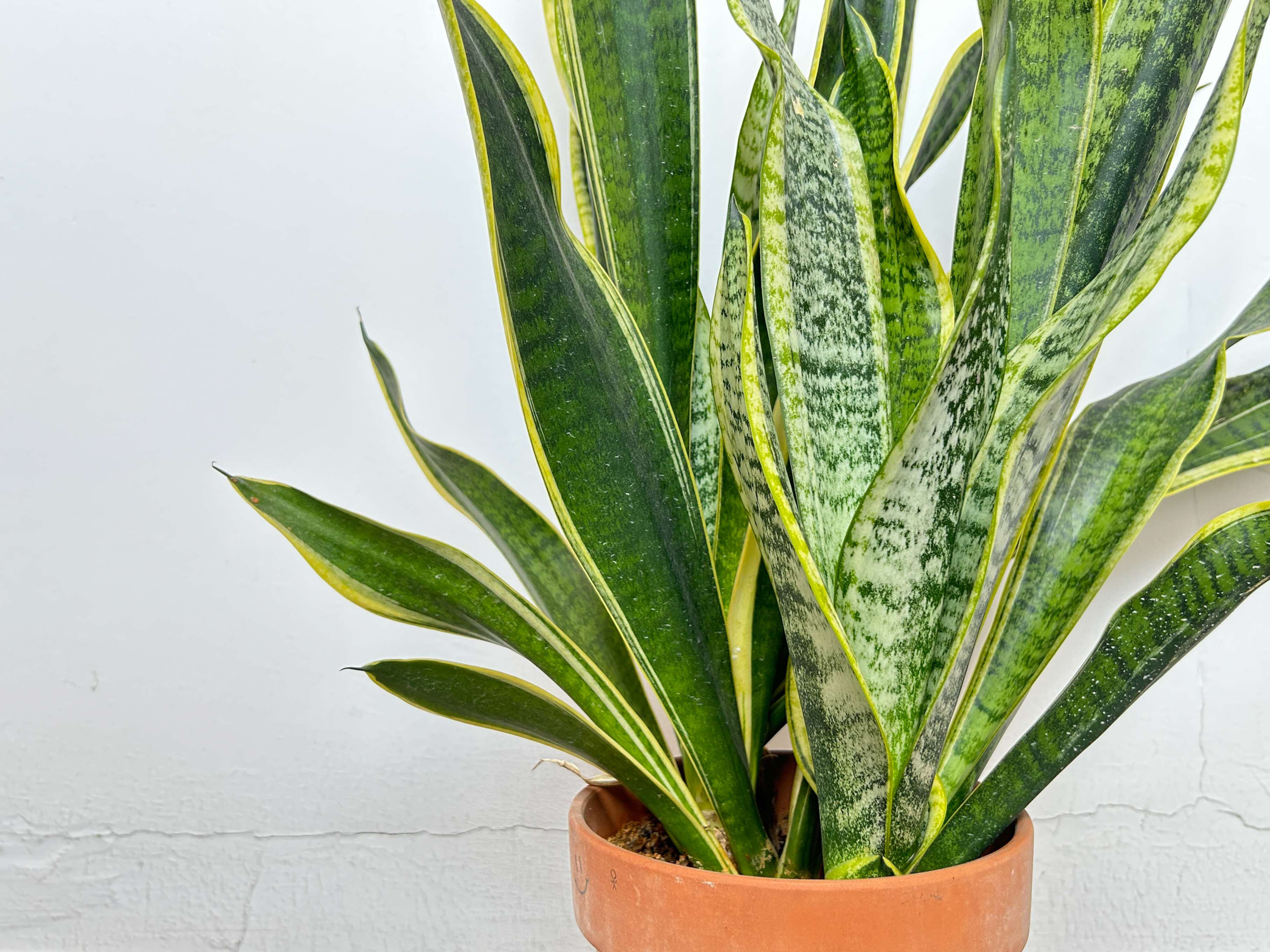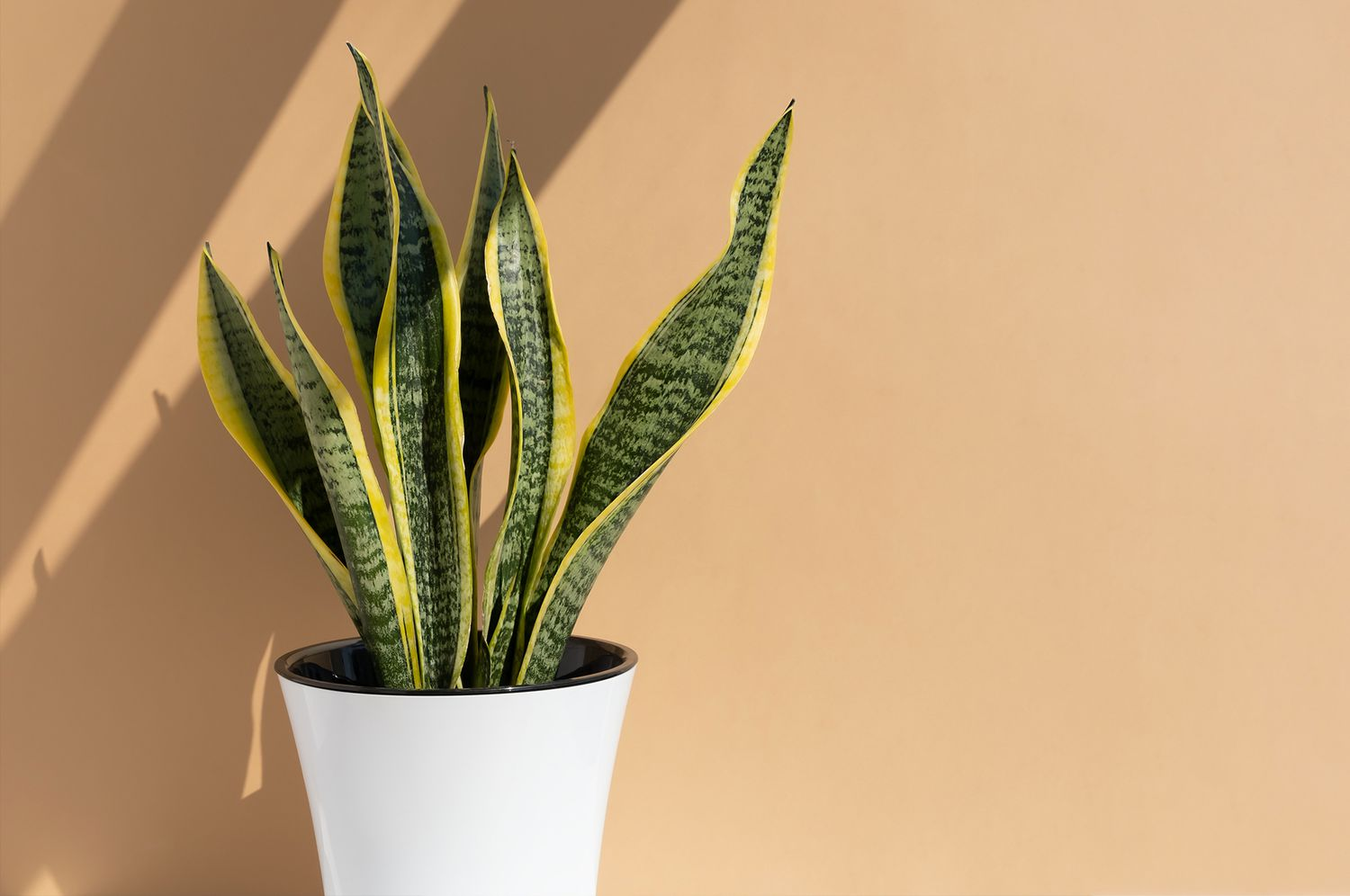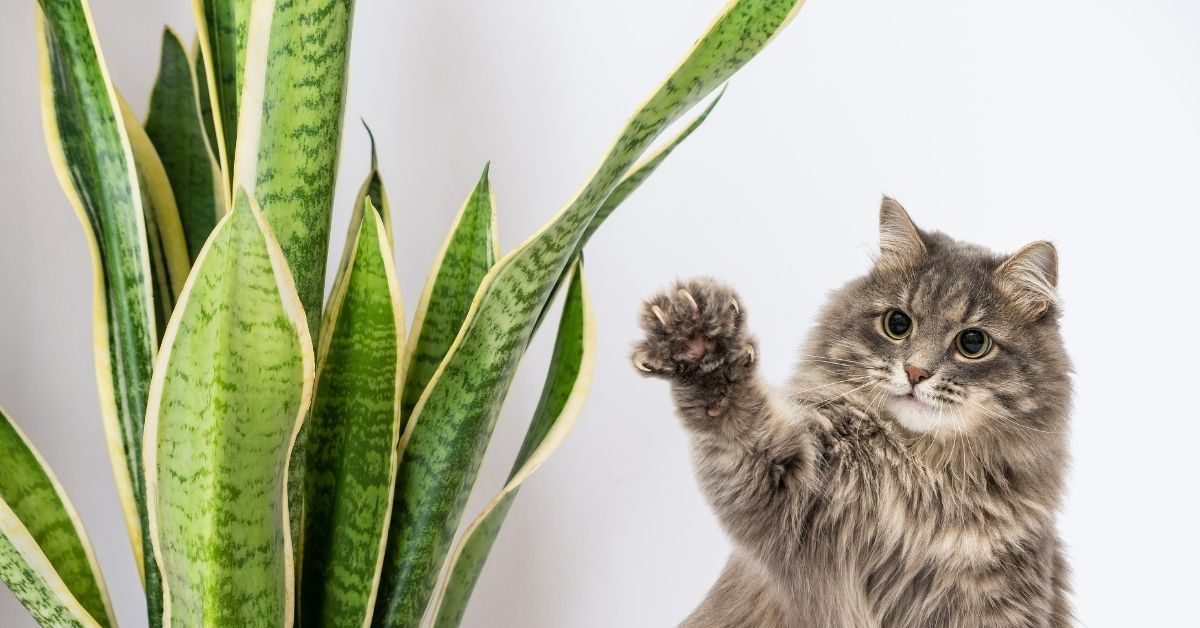HousePlantJoy is supported by our audience. When you purchase through one of our links, we may earn a small affiliate commission. As an Amazon Associate I earn from qualifying purchases. Your cost is not affected.
==================
Being someone who loves having plants around the house, I’ve always been intrigued by the variety of greenery that can thrive indoors. I was immediately drawn to the Snake Plant because of its distinctive appearance and renowned reputation for low-maintenance care.
But, like any responsible plant owner, I wanted to ensure it wouldn’t harm my household, especially with pets or curious kids around.
So, I decided to dig into whether Snake Plants are toxic. What I found was pretty reassuring but also eye-opening. I’ll share all the details about snake plant toxicity with you. Whether you’re a seasoned plant enthusiast or just thinking about adding a Snake Plant to your home and want to ensure it’s safe for everyone, this article is for you. Let’s jump in and explore the toxicity of the Snake Plant together.
Unveiling the Truth: The Toxicity of Snake Plants
Photo by: Gardening Know How
Snake plants, known as Sansevieria trifasciata or mother-in-law’s tongue, are popular indoor plants and are appreciated for their striking appearance and air-purifying abilities. While these plants offer numerous benefits, it’s crucial to acknowledge that they possess mild toxicity, which can lead to snake plant poisoning if ingested in large quantities. This toxicity, however, is outweighed by the plant’s capacity to cleanse indoor air by removing toxic air pollutants. This blog is here to help you fully grasp the toxicity of snake plants, debunking common myths associated with these plants, and offering tips on ensuring the safety of both humans and pets in households where snake plants reside.
Snake plants contain a natural compound called saponins, the plant’s effective defense mechanism against pests and fungi. While these saponins may render snake plants toxic to us and our pets if ingested in large quantities, the risk of severe poisoning is often overstated. It is crucial to note that snake plants should not be consumed and should be kept out of reach of children and pets to prevent snake plant poisoning.
In this blog, we will delve into the science behind snake plant mild toxicity, explore the key symptoms to watch out for after exposure, debunk myths surrounding Sansevieria Trifasciata toxicity, and provide safe handling practices for these plants.
Understanding Snake Plant Toxicity
Photo by: A Beautiful Mess
Sansevieria Trifasciata toxicity refers to the generally mild harm these plants can cause when ingested or touched. These plants contain toxic substances called saponins. While the toxicity level of snake plants is considered mildly toxic, with symptoms typically appearing only in response to large doses, it’s essential to handle them with care. These saponins are a defense mechanism against pests and fungi but can also cause mild irritation and discomfort in humans and animals.
Additionally, the mild toxicity of Sansevieria Trifasciata can be attributed to saponins. These toxic substances are found in all plant parts, including the leaves, flower stems, flowers, and berries. When ingested, these saponins can cause gastrointestinal discomfort, such as nausea, vomiting, and diarrhea. It is important to note that the severity of the symptoms may vary depending on the amount of plant material ingested. Therefore, keeping a close eye on pets or young children who may be tempted to nibble on the plant’s leaves is crucial.
Skin contact with Sansevieria Trifasciata can also lead to irritation and allergic reactions, especially in individuals with sensitivities. The saponins in snake plants can cause inflammation and allergic responses in some people, resulting in redness, itching, and skin swelling. It’s a good idea to handle snake plants carefully and avoid direct contact to reduce the chance of skin irritation. Implementing preventative measures such as wearing gloves when handling the plants can also reduce irritations.
Here’s a video about the benefits of owning a snake plant!
By: Health Scoop
Did you Know?
Sansevieria Trifasciata are also well-loved in feng shui practices for their reputed ability to absorb negative energy and enhance positive chi flow. Placing snake plants strategically in your home can create a harmonious and balanced environment.
Myth vs. Reality: Is It Dangerous?
Photo by: The Spruce
Contrary to popular belief, snake plants are not inherently dangerous or harmful. The idea that these plants bring negative energy or bad luck is a common myth. In fact, snake plants can actually improve indoor air quality by eliminating toxins like formaldehyde, benzene, and xylene.
They are known for their air-purifying abilities and can contribute to a healthier indoor environment. While snake plants contain toxic substances, the risk of severe poisoning is low. They should be handled with care and kept out of reach of children and pets, but with proper precautions, they can be enjoyed without any major health concerns.
Here’s an additional informational video about the toxicity of snake plants.
By: Gardening Is Best 3M
Identifying Key Symptoms: What to Watch Out for After Exposure
Photo by: Martha Stewart
Exposure to snake plants can result in various symptoms depending on the contact mode. Here are some key symptoms to watch out for after exposure:
- Ingestion: Consuming Sansevieria Trifasciata leaves can lead to symptoms such as nausea, vomiting, and diarrhea. Ingesting a large quantity of the plant material can cause more severe gastrointestinal discomfort.
- Skin Irritation: Direct contact with snake plants can cause skin irritation and allergic reactions. Symptoms may include redness, itching, and swelling of the skin.
- Respiratory Issues: In rare cases, individuals with respiratory sensitivities may experience difficulty breathing or wheezing after exposure to snake plants.
- Eye Irritation: Contact with Sansevieria Trifasciata sap or rubbing eyes after handling the plant can result in eye irritation. Symptoms may include redness, itching, and watering of the eyes.
- Nausea and Vomiting: These are common reactions as the body tries to rid itself of the toxic substance.
- Diarrhea: This can occur as the gastrointestinal system reacts to the saponins.
- Drooling: In pets, excessive drooling can signify nausea or irritation in the mouth and throat.
- Lethargy: Affected individuals or animals may appear unusually tired or weak due to the body’s reaction to the toxin.
- Mouth Irritation: Humans and pets might experience mouth, lips, and tongue irritation after chewing on the plant.
- Abdominal: You might experience stomach discomfort or pain due to upset stomach.
It is important to seek medical attention if any severe symptoms occur or if there is a known allergy to snake plants.
Accidental Ingestion: Essential Steps to Take with Snake Plants
Photo by: GardeningSG
In case of accidental ingestion of Sansevieria Trifasciata leaves, it is important to take immediate action. Here are the steps to follow:
- Remove any plant remnants from the mouth.
- Rinse the mouth with water to clear out any remaining plant particles.
- Avoid causing vomiting unless instructed by a healthcare provider.
- Go to your doctor or seek medical attention for further guidance.
Suppose a child or pet has ingested a large quantity of snake plant material or is experiencing severe symptoms such as abdominal pain. In that case, contacting a healthcare professional or veterinarian is important. They can provide appropriate guidance and treatment.
Snake Plant Safety: Best Practices for Handling with Care
Photo by: Martha Stewart
Certain practices are important to ensure the safe handling of Sansevieria Trifasciata. Ensure snake plants are out of reach of children and pets, as ingestion can lead to mild toxicity. It’s essential to teach everyone at home about the possible dangers of snake plants and why it’s crucial to avoid touching them directly.
Best Practices for Avoiding Direct Contact
When dealing with snake plants, putting on gloves to shield your skin from the plant’s sap is a good idea. This sap might lead to skin irritation or allergic reactions in certain people. Wearing gloves helps lower skin irritation and keep your hands safe.
If you accidentally touch snake plant sap, wash the affected area well with soap and water. Remember not to rub your eyes or any other sensitive spots after handling the plant, as this could spread the sap and cause irritation.
Tips for Safe Placement in Your Home
To ensure the safety of children and pets, it is important to place the Sansevieria Trifasciata in areas that are out of reach. Consider placing the plants on a high shelf or on top of a tall cabinet where they cannot be accessed easily. This will prevent accidental ingestion or direct contact with the plant.
Avoid placing snake plants where children or pets have easy access, such as low tables or countertops. Keeping the plants out of reach can minimize the risk of exposure and potential harm.
Safeguarding Furry Friends and Little Ones: Pet and Child Safety with Snake Plants
Photo by: Plant Degree
To ensure the safety of pets and children, taking precautions regarding snake plants is important. Consider non-toxic alternatives if pets or small children are prone to ingesting plants. Restrict access to rooms where snake plants are kept or place them on high shelves out of reach.
Identifying Non-toxic Alternatives for Pet Owners
If you have pets and want to avoid potential toxicity, there are several non-toxic alternatives to snake plants. Some pet-friendly houseplants include spider plants, Boston ferns, and areca palms. These plants are safe for pets to be around and do not pose a risk of toxicity if ingested.
By choosing non-toxic alternatives, you can create a pet-friendly environment that ensures the safety and well-being of your furry friends.
Childproofing Your Home: Keeping Plants Out of Reach
Childproofing your home is essential to keep plants out of reach of children. Place snake plants on high shelves or suspended planters to prevent children from coming into contact with them. Ensure that no nearby objects can be used as climbing aids to reach the plants.
Wrapping Up: Understanding Snake Plant Toxicity
To wrap up, it’s truly vital as a plant parent to grasp the mild toxicity of snake plants for ensuring their safe handling and care. Let’s bust those myths about their dangers and instead, focus on the wonderful benefits they bring into our homes. Embracing these green beauties can truly foster a harmonious atmosphere indoors.
By adhering to safe handling practices, like steering clear of direct contact and implementing pet and child safety measures, you can relish the beauty of snake plants without any frets. Always keep in mind to prioritize the well-being of your loved ones and your cherished plant by weaving these guidelines into your everyday routines.
For more tips on nurturing your houseplants and creating a joyful green haven, head over to Houseplant Joy website. Let’s grow together and spread the love for plants!
Frequently Asked Questions
What's the Right Frequency for Watering My Sansevieria Trifasciata?
Snake plants require watering when the soil feels dry to the touch. Overwatering may result in root rot and other problems.
Can Snake Plants Be Kept in Bedrooms?
At night, they can transform carbon dioxide into oxygen, effectively enhancing indoor air quality. Moreover, they serve an essential function in removing toxins such as formaldehyde and xylene, commonly found in household materials.
Are There Any Non-Toxic Varieties of Snake Plants?
While all parts of the Sansevieria Trifasciata contain toxins, there are no known non-toxic varieties.
















